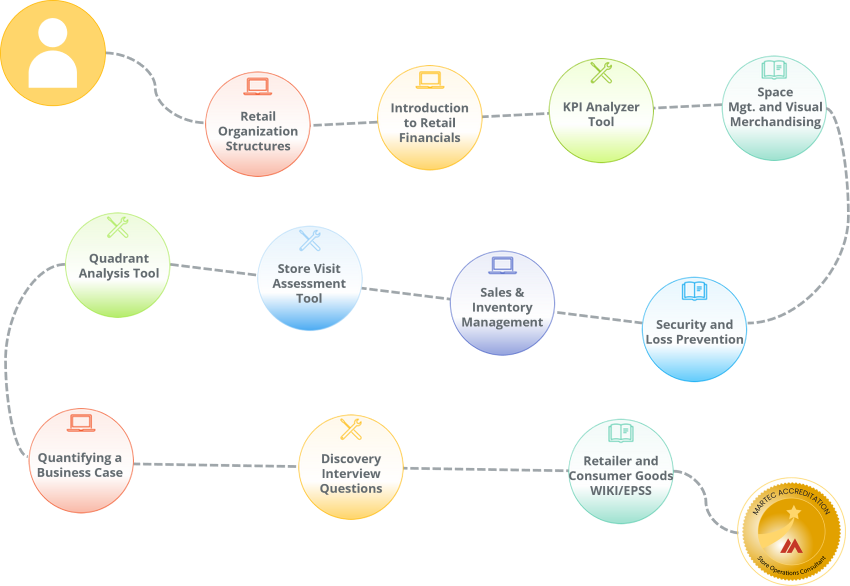Store Operations Consultant
Retail Consultant - Store Operations Learning Path
This learning path is for consultants, project managers and business analysts who work on implementation projects for clients and need a deeper knowledge of store operations processes, including the impact of omni-channel retailing on store operations activities. It assumes that learners have completed the retail induction learning path or have equivalent knowledge from past projects.
Select any of the circles along the path to find out more about each step.
The total estimated learning time is 17 hours.
For groups of learners studying at the same time, there is an optional Store Operations Management class delivered live via web sessions. It adds a further 10 hours of study and is quoted separately to our e-learning web pricing.

The Skills You Learn
By studying this learning path, consultants will gain these skills:
- Explain typical organization structures, identify the functional departments and their key executive roles, and articulate their common pain points.
- Interview executives and managers to identify operational challenges and identify potential performance improvements.
- Analyze retail financial statements to identify potential ways to grow sales, increase achieved gross margins, reduce expenses, optimize inventory to achieve service level targets and improve cash flow.
- Analyze a wide range of retail KPIs to recognize where performance is better or worse than industry norms and identify performance improvements.
- Carry out store visits to customer and competitor stores and identify potential areas to improve store performance.
- Analyze weekly and monthly trading performance reports, identify and implement resulting performance improvements.
- Analyze and grow sales per square foot or square meter productivity.
- Detect sources of inventory loss and fraud and develop processes and solutions to reduce total company shrink.
- Carry out quadrant analysis to identify areas where IT systems improvements will improve overall company performance.
- Quantify business cases for improvement projects.
